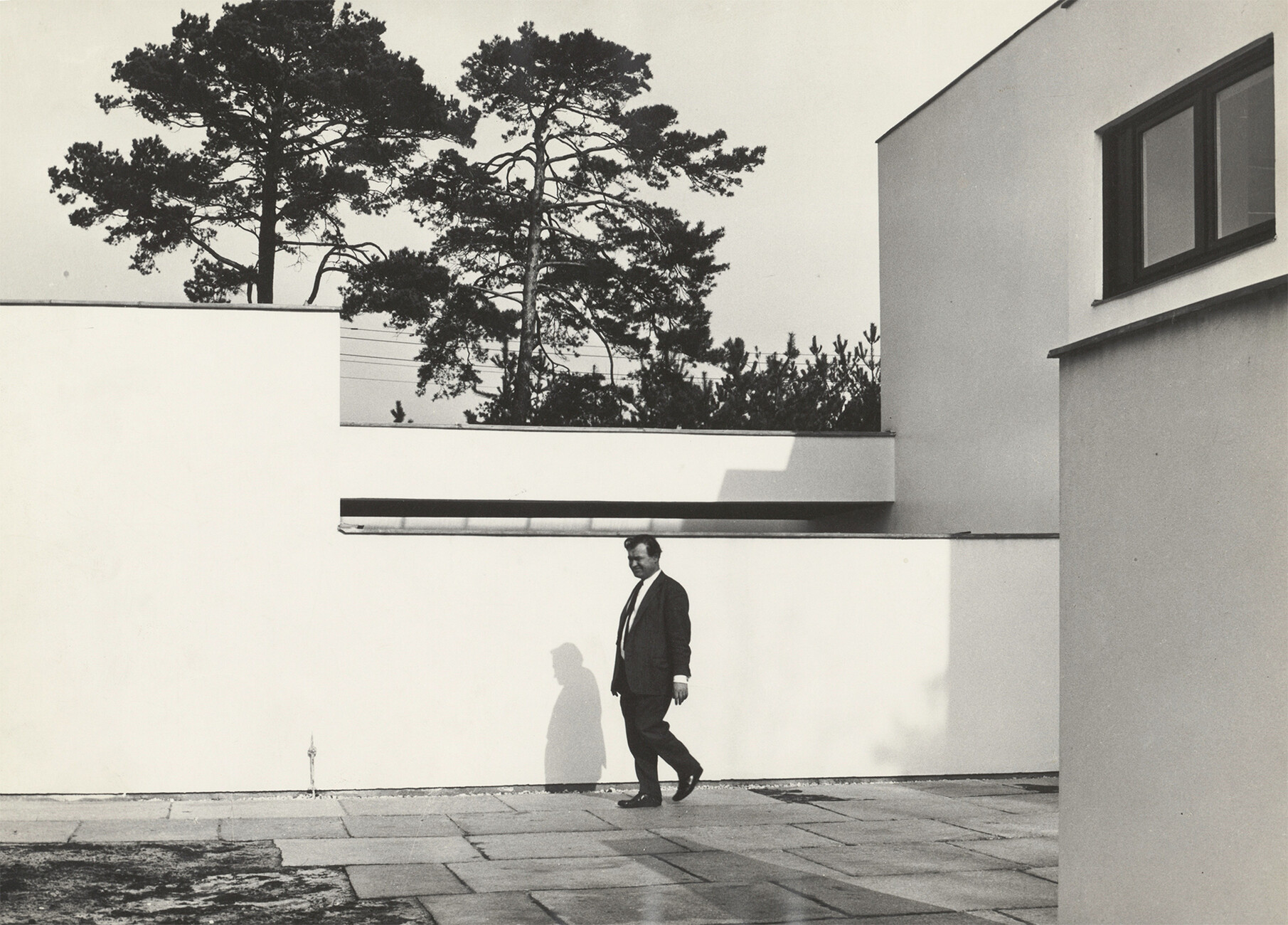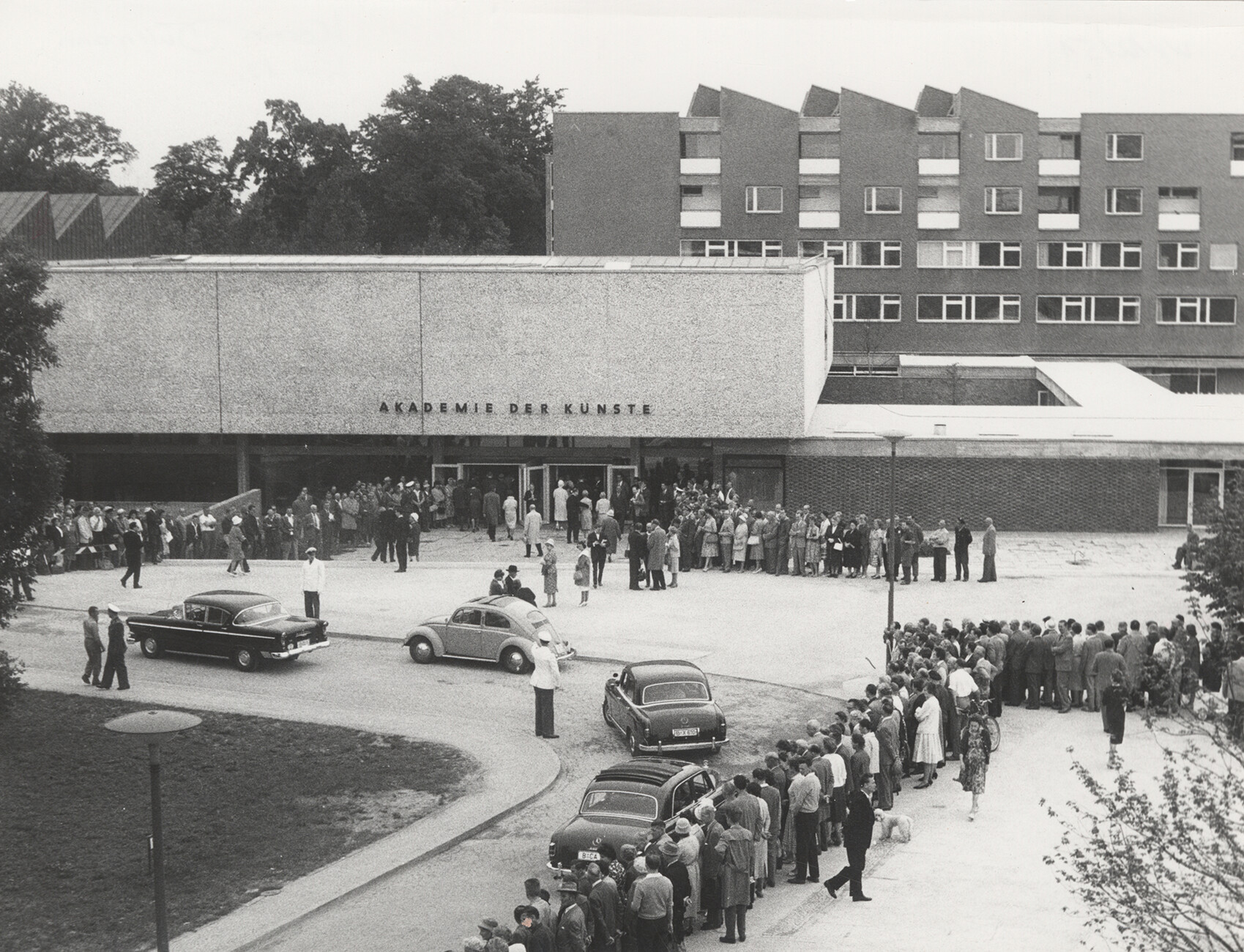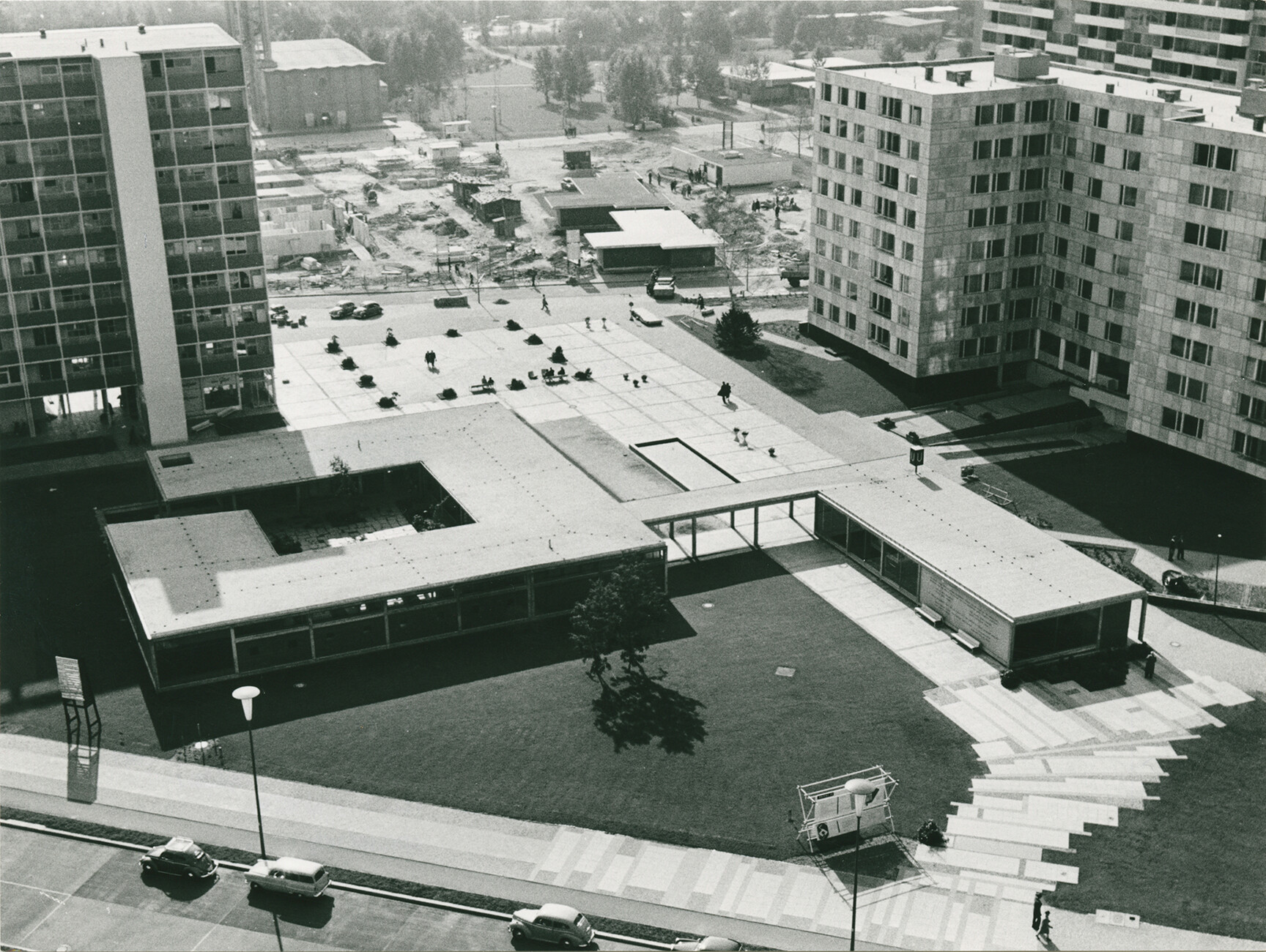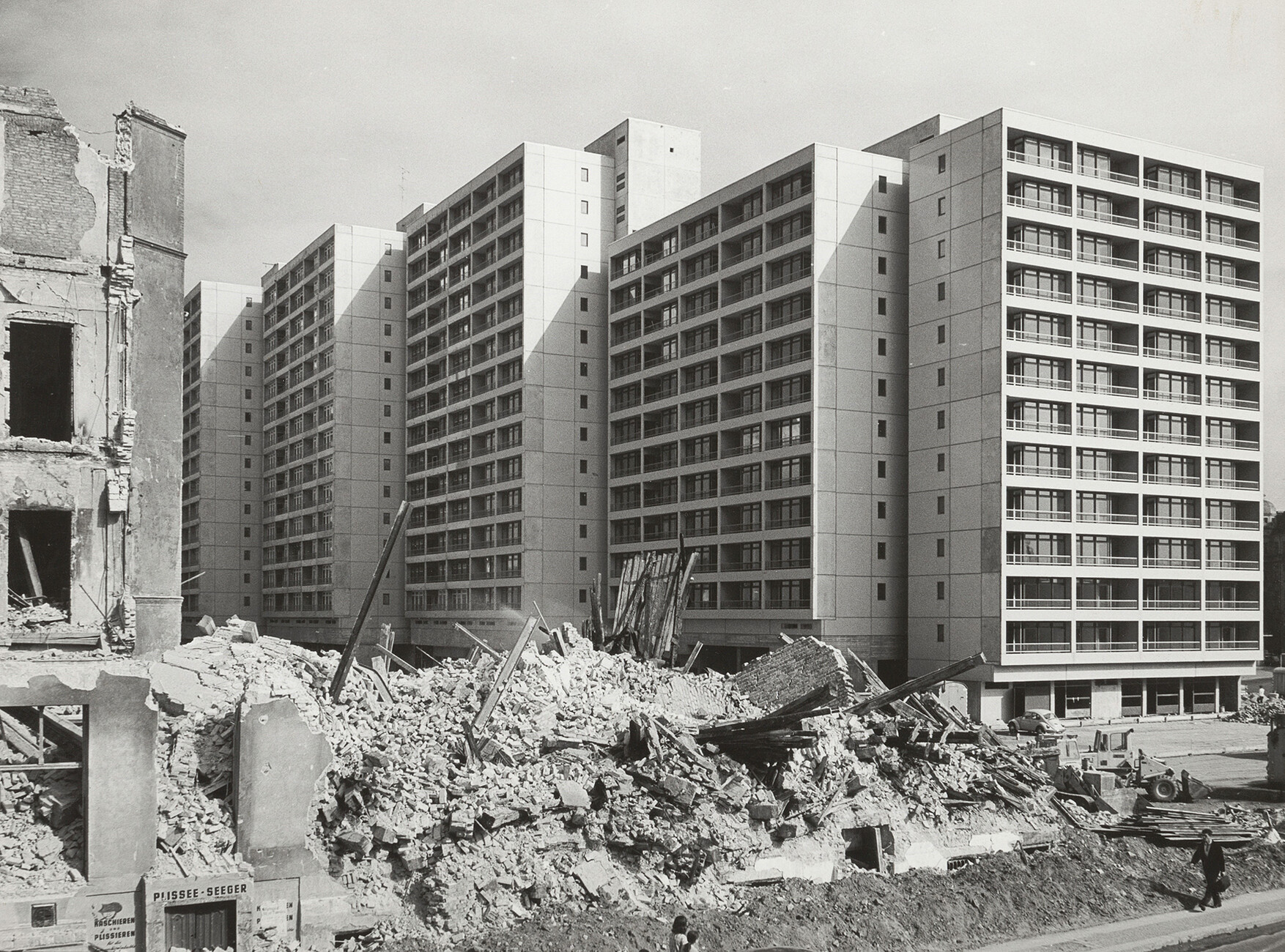Werner Düttmann 100: Building. Berlin.
Berlin-based architect and urban planner Werner Düttmann (1921-1983) would have turned 100 on March 6, 2021. And it is no exaggeration to describe him as one of the city’s most important figures. As the Berlin Senate’s Planning Director in the years when the Berlin Wall was under construction from 1960 through 1966, he was also a professor, teaching at the TU, Berlin’s technical university, from 1966 through 1970 and he still found time to be President of the Berlin Academy of Arts, from 1971 until his untimely death. As well as holding the above offices, he also always remained a freelance architect and the fact that these positions overlapped is bound to have helped him to win contracts. Düttmann knew simply everybody, he was the German architect who acted as focal point for Hugh Stubbins when the latter was designing the Berlin Kongresshalle, the city’s congress hall in the Tiergarten district, from 1956-7 and he undertook the project planning for Bruno Grimmek’s “Palais am Funkturm”. Both buildings are doubtless amongst the most vibrant examples of the kind of cheerful architecture in evidence in West Berlin in the 1950s.
However, Düttmann also took charge of the construction of his own building projects. Examples of his work are still in evidence today, from Spandau to Zehlendorf, and from Neukölln to Reinickendorf, including the Märkische Viertel district, the round residential building on Mehringplatz, two churches, the St. Agnes in Kreuzberg (which is today home to Johann König’s gallery) and St. Martin’s, TU’s brutalist main dining hall. He is also responsible for the airy Traffic Control Stand at the city’s best-known crossing, the Ku’damm. And the “half-city” that was once West Berlin also has Düttmann to thank for three of its very finest buildings. After all, he was the brains behind not only the wonderfully light “Volksbibliothek”, the municipal library, in the Hansa district (1956-57), but also the Akademie der Künste itself (1958-60), which stretches out into the greenery of the Tiergarten, not to mention the Brücke Museum (1964-7) on the edge of the Grunewald, an edifice that opens out like a pavilion. Even if nowadays surprisingly few people are familiar with the name “Düttmann”, everybody who knows their way around West Berlin to a certain extent knows one of his buildings.
Düttmann’s strange lack of renown is something that had also struck Lisa Marei Schmidt, who has been Director of the Brücke Museum since 2017. For one of her first exhibitions, Schmidt had the interiors, which had been repeatedly altered over the years, largely restored to their original state. They revealed an astonishingly subtle approach to architecture, with a multilayered network of correlations between outside and inside, light and shade, art, building and man. According to Schmidt, she herself was amazed. First, at how complex and well-thought-out this relatively small, inconspicuous building actually was. And second about the facts that almost nobody else knew Düttmann and that none of the larger art venues in Berlin were planning any exhibitions to mark the 100th anniversary of his birth. And so, she herself set about planning one, even if she was more used to communicating art than architecture.
Perhaps this is, after all, the reason why the exhibition “Werner Düttmann. Berlin. Bau. Werk” (on show until August 29, 2021) has turned out to be so good. Not only because it has been possible to host it in this building designed by Düttmann himself, but also and particularly because apart from the fine, concentrated exhibition in Dahlem there is a multimedia network project in place, a project which boasts a wonderful, incredible substantive depth, its scope extending far beyond the show to the city itself. As well as the Brücke Museum, it also uses the Akademie der Künste and the library in the Hansaviertel district as exhibition locations. Additionally, large information boards have been erected in front of 28 of Düttmann’s extant buildings and these are brought together on a wonderfully designed website that acts as an interactive map and can, for example, be used as a city guide on users’ cell phones, with visitors embarking on a Düttmann safari and finding architectural gems in parts of the city with which they had previously not, perhaps, been all that familiar – with their attention directed to the Kleiner Wannsee residential park, to the youth center in Zehlendorf, to the Lentzeallee residential complex, to the Edinburgh House on Theodor Heuss Platz or to the Rolf Salzbrodt House.
In order to ensure that, in all the above examples, viewers do not have to peer over the fence in order to catch a glimpse of all these buildings, some of which are, as is to be expected, very private places, the exhibition team has also conducted a whole string of wonderful interviews and seen a number of the various locations with the current residents and users of Düttmann’s building and these are available on the website as audio content or films, taking us into and around a number of the buildings without disturbing their current occupants. What this exhibition has achieved is no less than fundamental work; it will remain available online, independent of the exhibition’s timeframe and its location, together with comprehensive information on Düttmann’s life and on all of the buildings mentioned. Because of the extremely successful way it links the different media, this Düttmann exhibition sets new standards – something that really cannot be said all that often of architecture exhibitions in Berlin.
Werner Düttmann
Building. Berlin.
Until 29 August 2021
Brücke-Museum
Bussardsteig 9
14195 Berlin
Wednesday - Monday: 11 am - 5 pm
Tuesdays closed
Tip: Berlin architectures of the 1980s will furthermore be on display at the exhibition "Anything Goes?" at the Berlinische Galerie until August 16, 2021.
Anything Goes?
Berlin architectures of the 1980s
Berlinische Galerie
State Museum of Modern Art, Photography and Architecture
Alte Jakobstrasse 124-128
10969 Berlin
Wednesday to Monday: 10 a.m. - 6 p.m.
Closed on Tuesdays
























